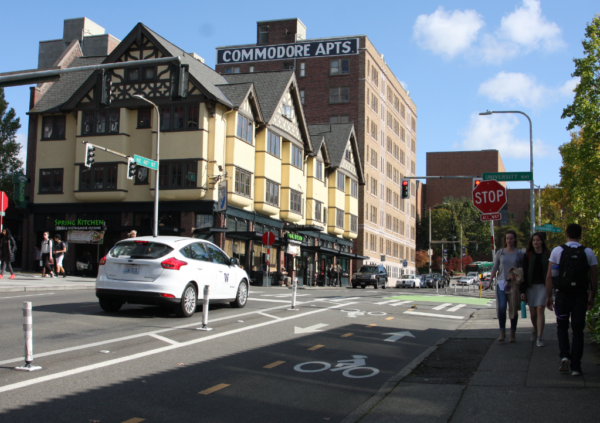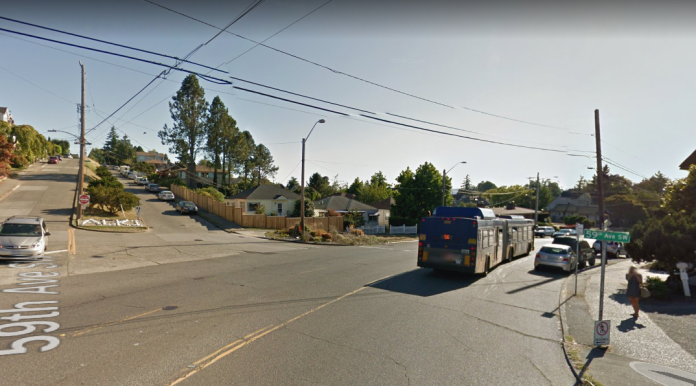The Seattle Department of Transportation (SDOT) has selected three signals across the city to be converted to all-way stops. The conversions require reprogramming signals to flash red continuously and adding stop signs. Signal conversions at some intersections can improve overall throughput and safety. The signal conversions often improve the experience for pedestrians and bicyclists since they don’t have to a wait full light cycle to move through an intersection.
This isn’t the first foray into such signal conversions. In 2014, SDOT converted a signal at University Way NE and NE 40th St to an all-way stop. Lights at the intersection now blink red continuously and regular stop signs were added. NE 40th street provides an important east-west link between the main University of Washington campus and Burke-Gilman Trail. Four dormitories also flank the street west of University Way NE.

The three signalized intersections getting the conversion are spread across West Seattle, Licton Springs, and University District:
- SW Admiral Way and 59th Avenue SW;
- College Way N and N 95th Street; and
- NE 50th Street and 17th Avenue NE.
In 2015, I had suggested that similar signal conversions should be made on NE Campus Pkwy at Brooklyn Ave NE and University Way NE for many of the same reasons that SDOT modified University Way NE and NE 40th St. Are there any intersections that you think deserve an all-way stop instead of a full-fledge red/yellow/green signal?
The featured image of SW Admiral Way and 59th Avenue SW is courtesy of Google Maps.
Stephen is a professional urban planner in Puget Sound with a passion for sustainable, livable, and diverse cities. He is especially interested in how policies, regulations, and programs can promote positive outcomes for communities. With stints in great cities like Bellingham and Cork, Stephen currently lives in Seattle. He primarily covers land use and transportation issues and has been with The Urbanist since 2014.



